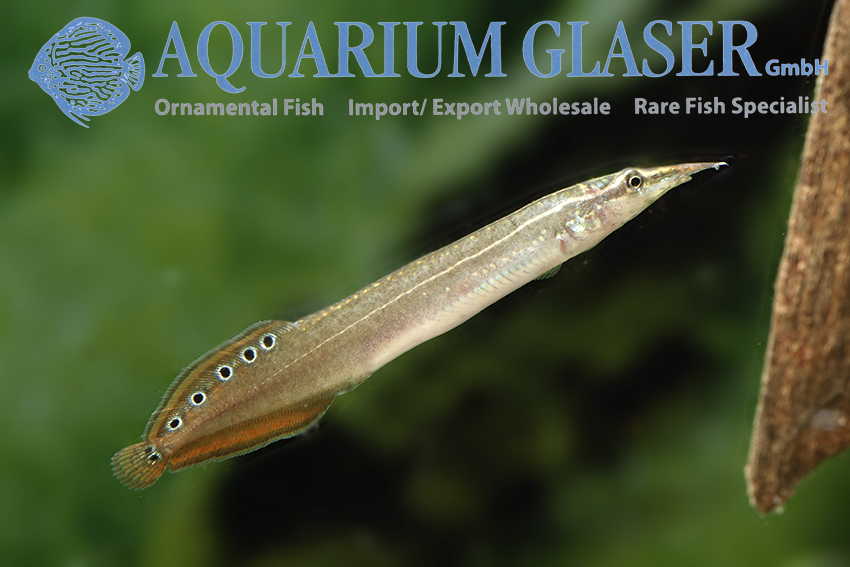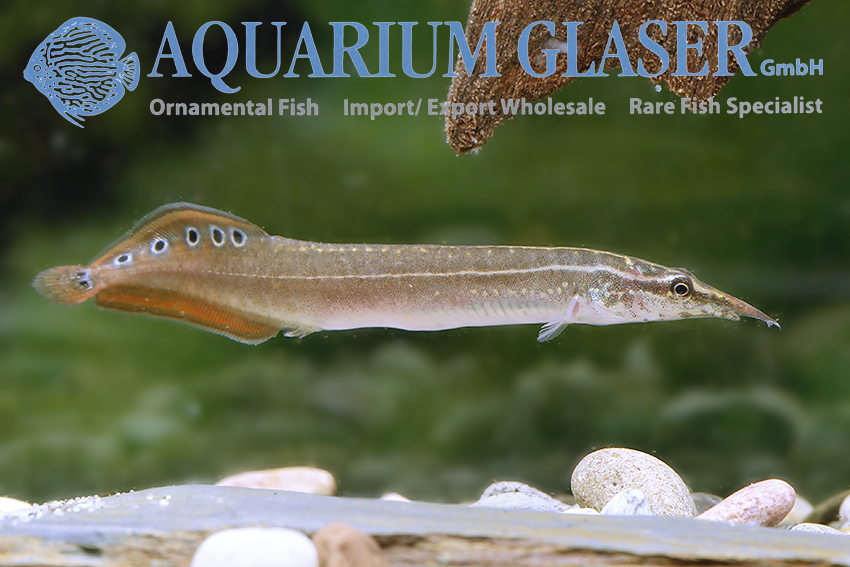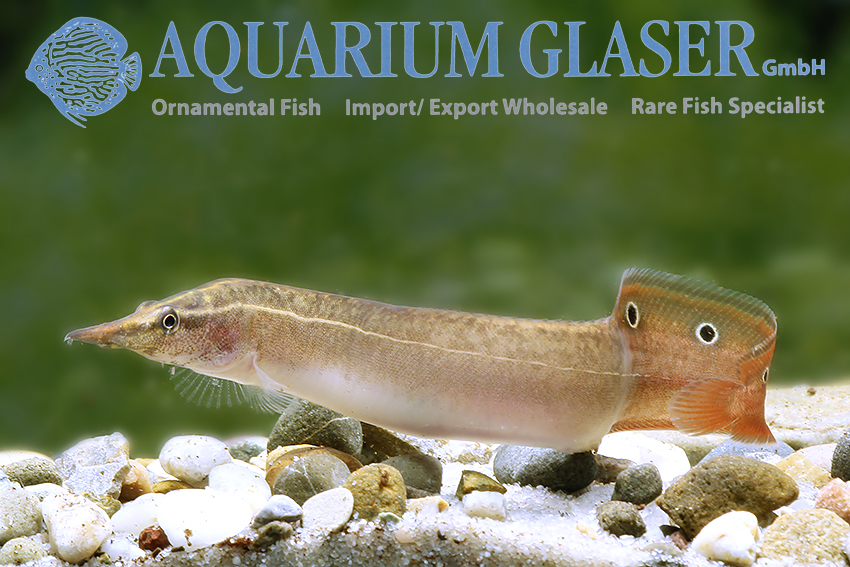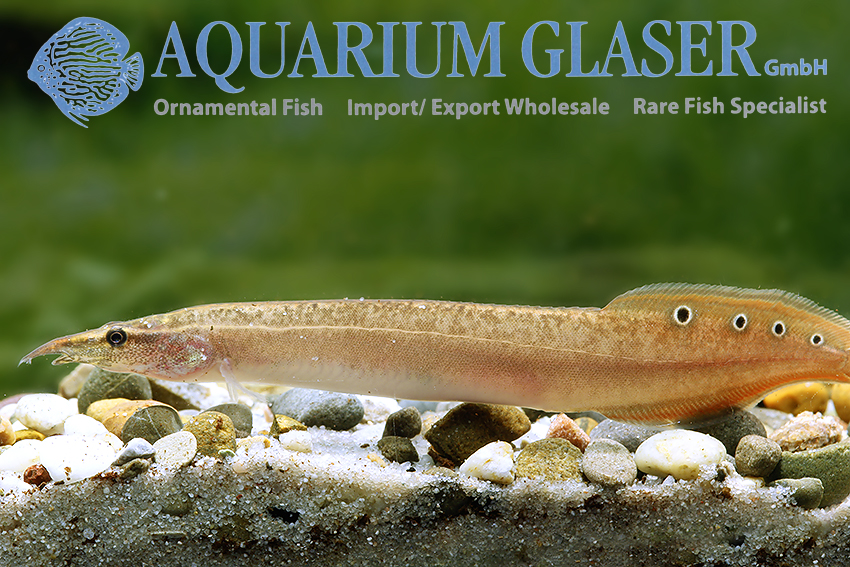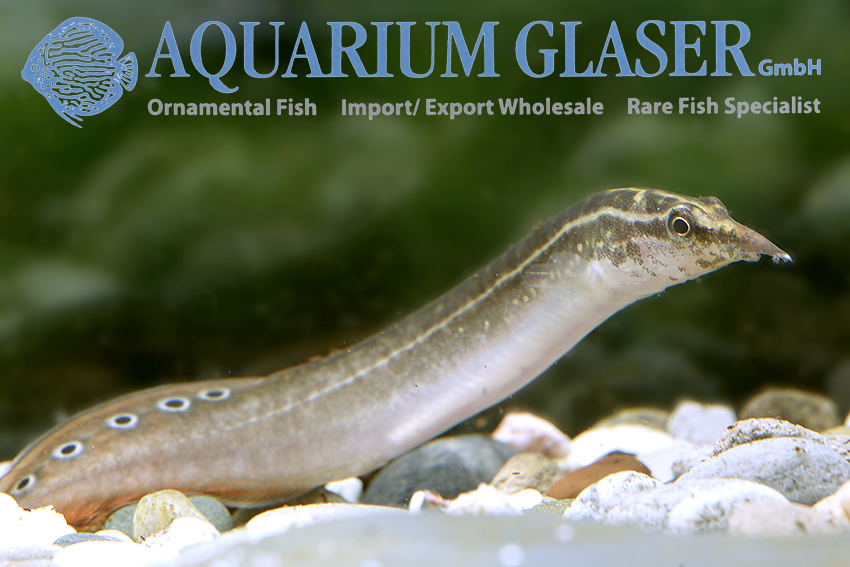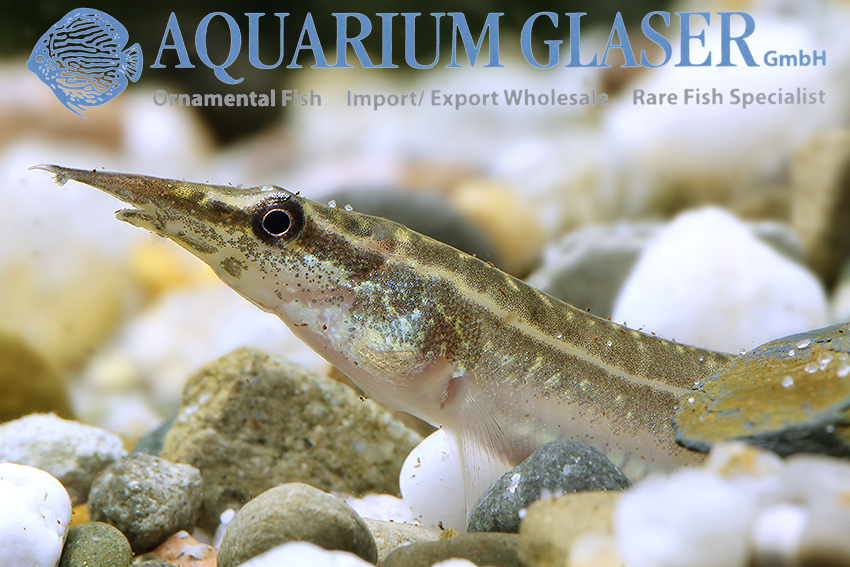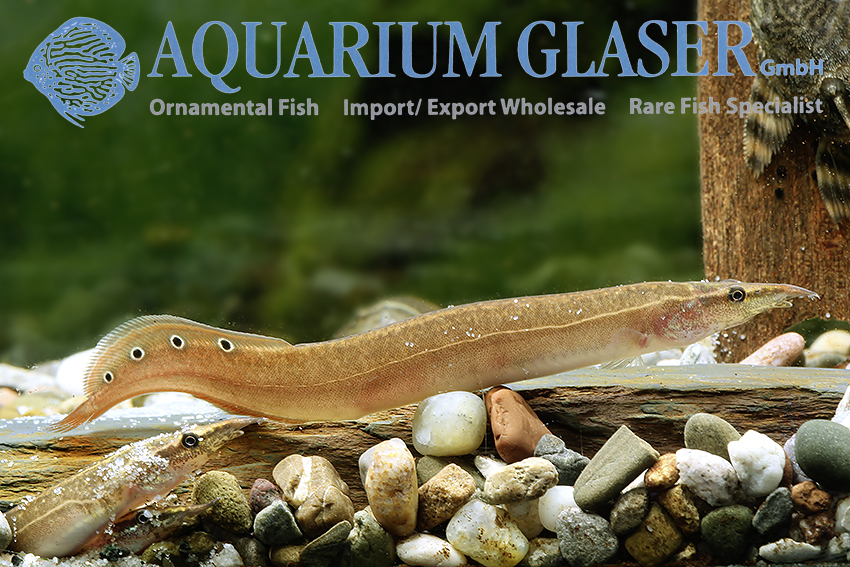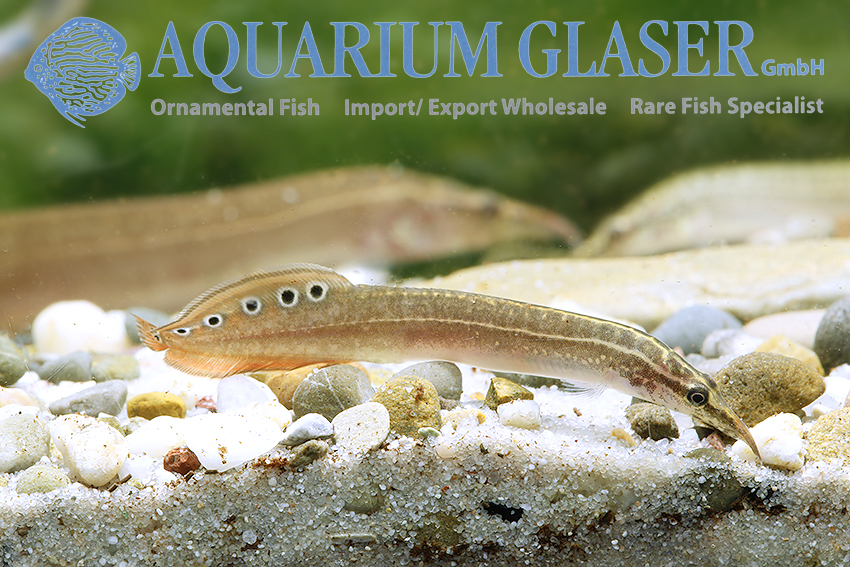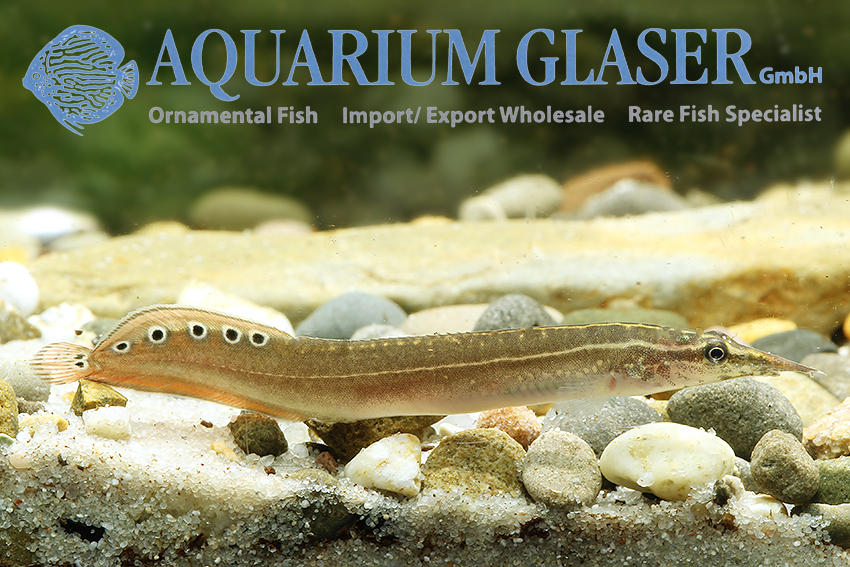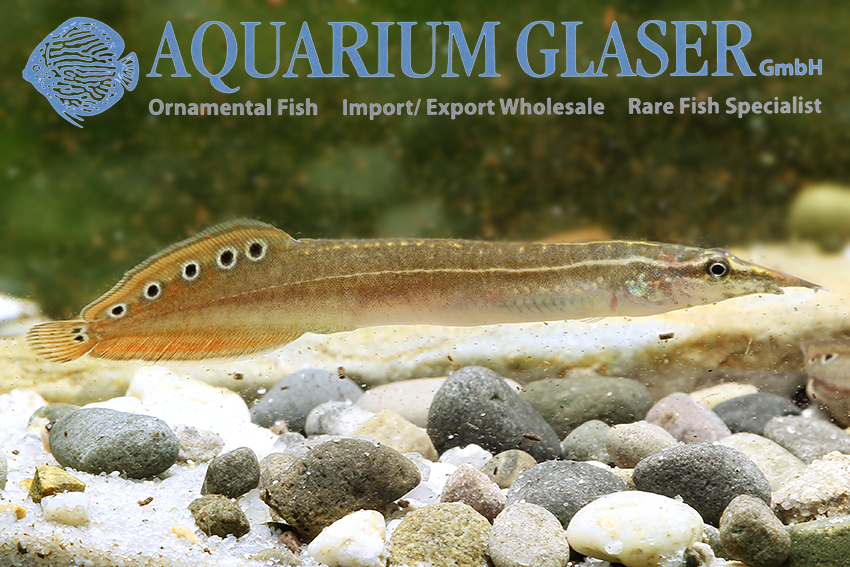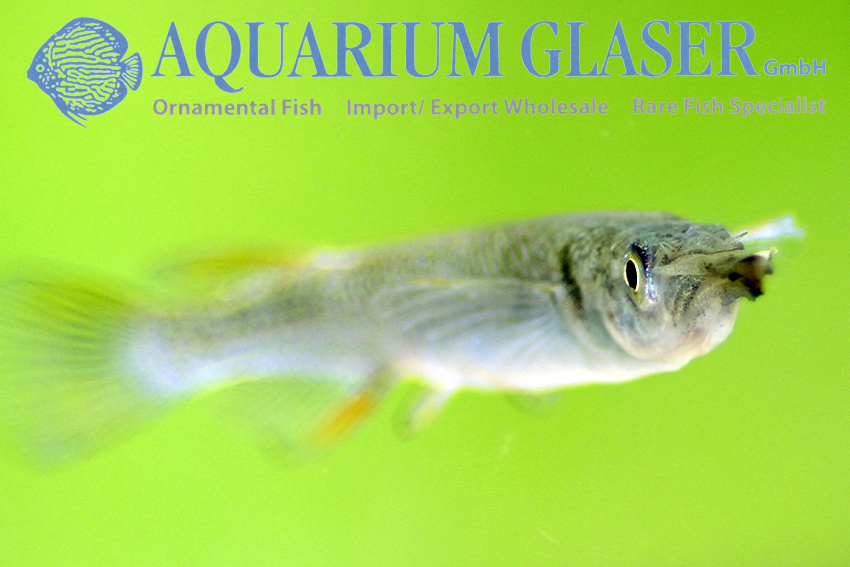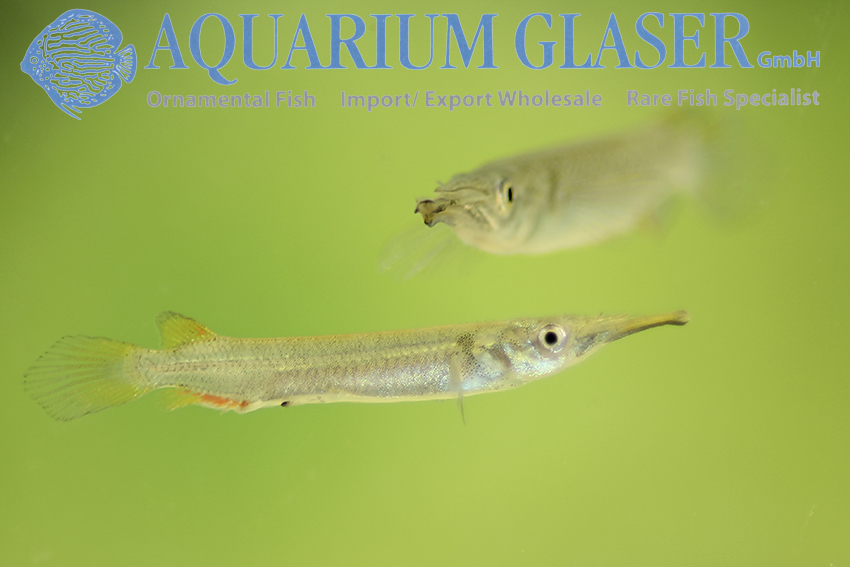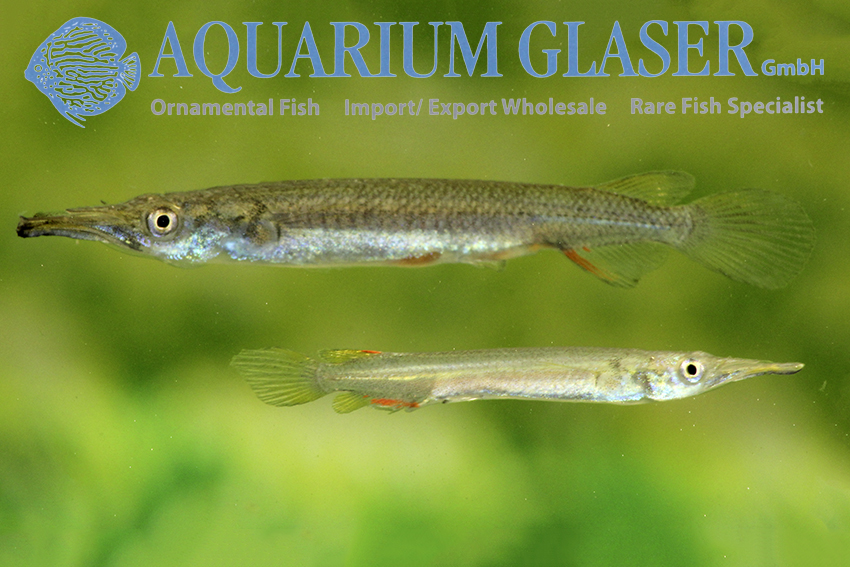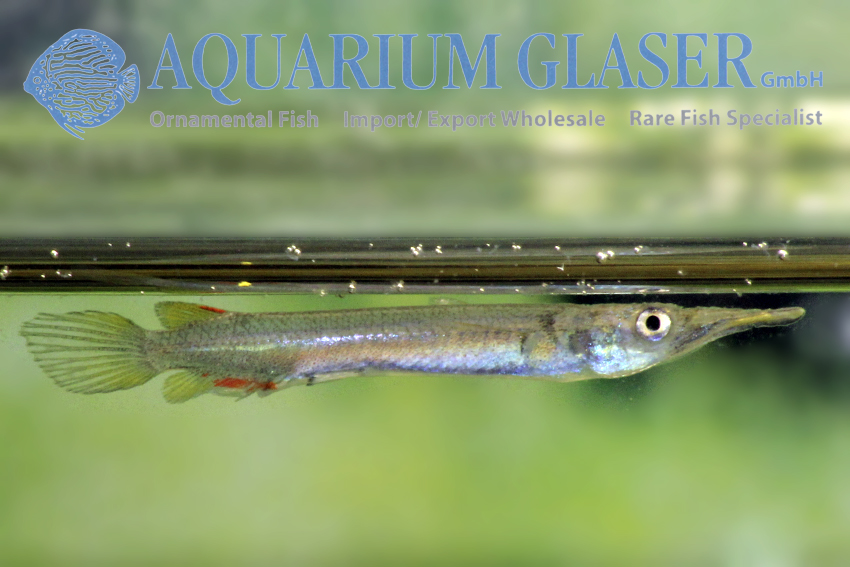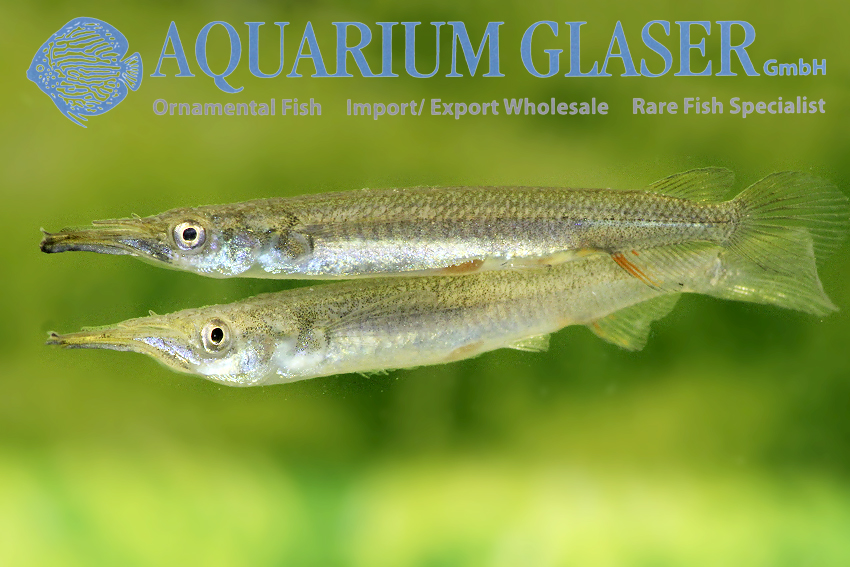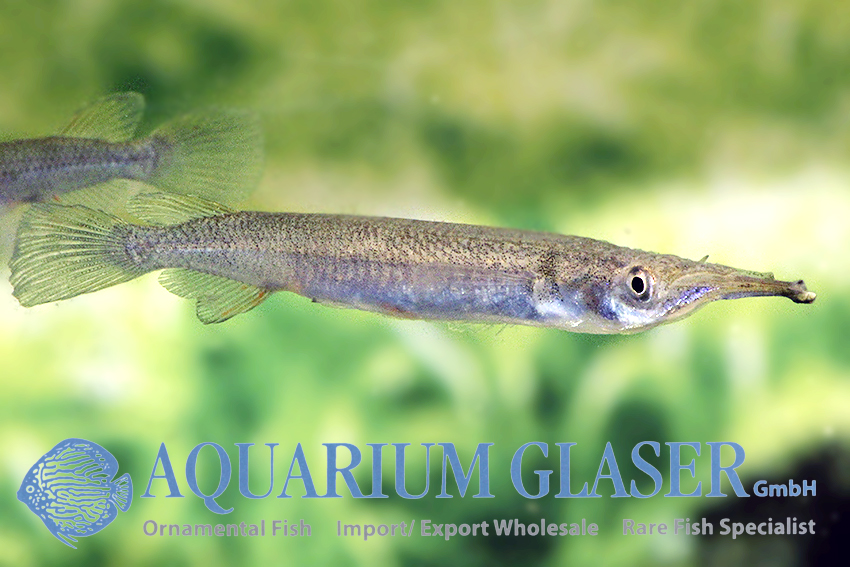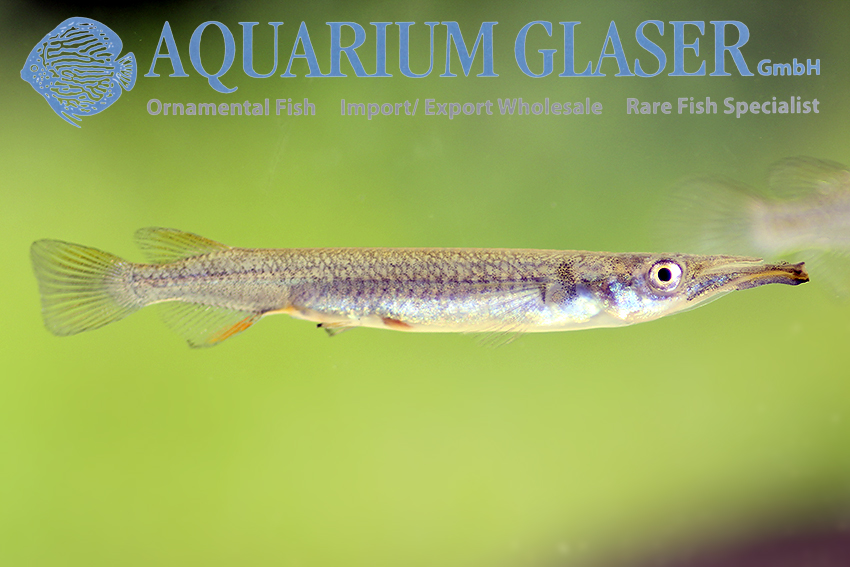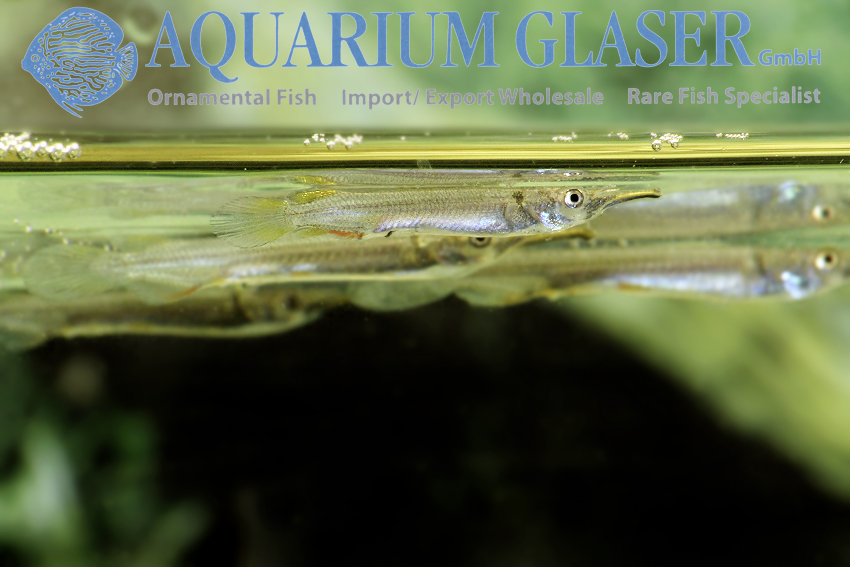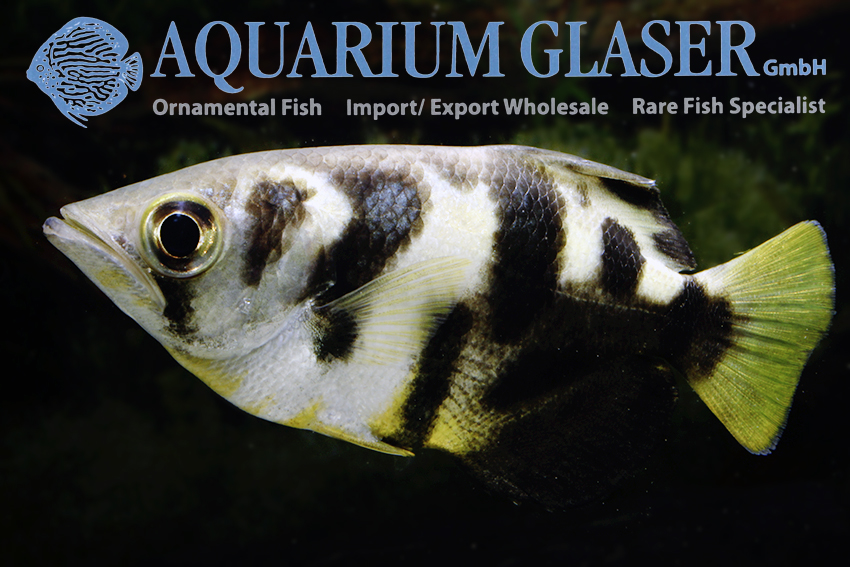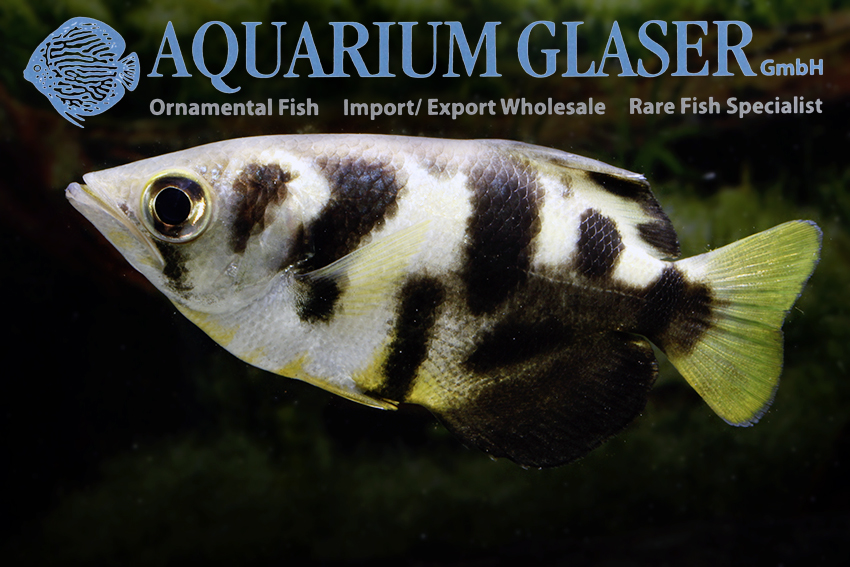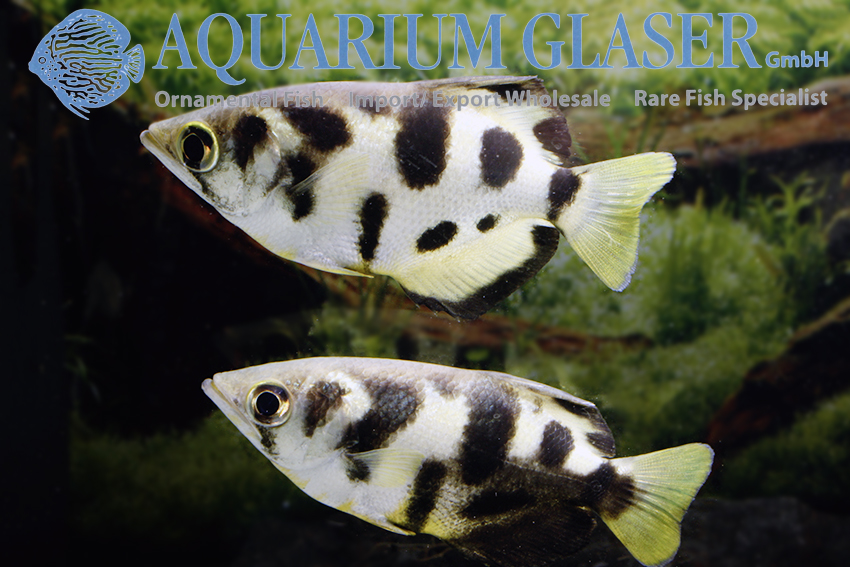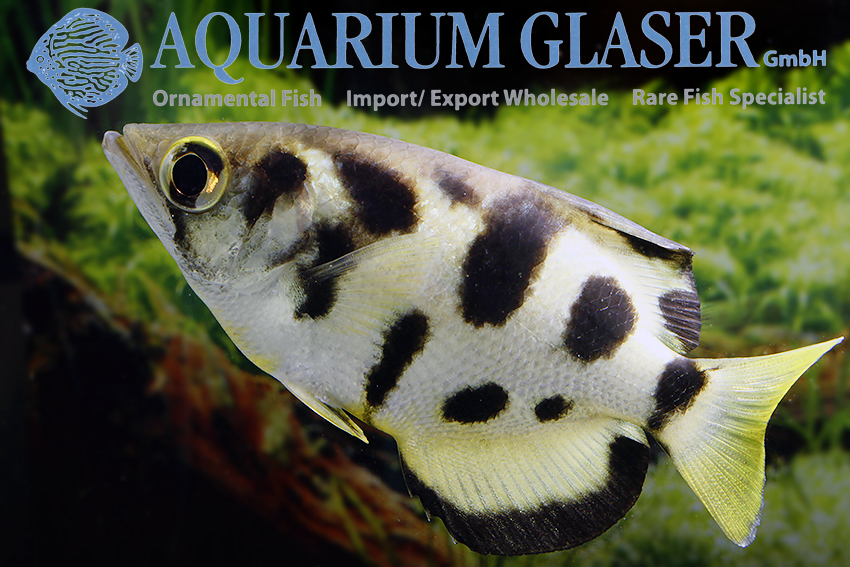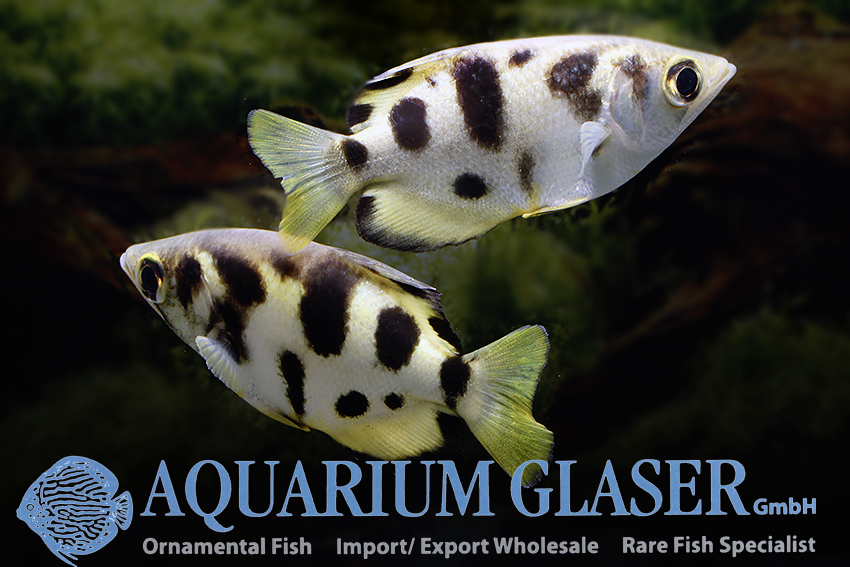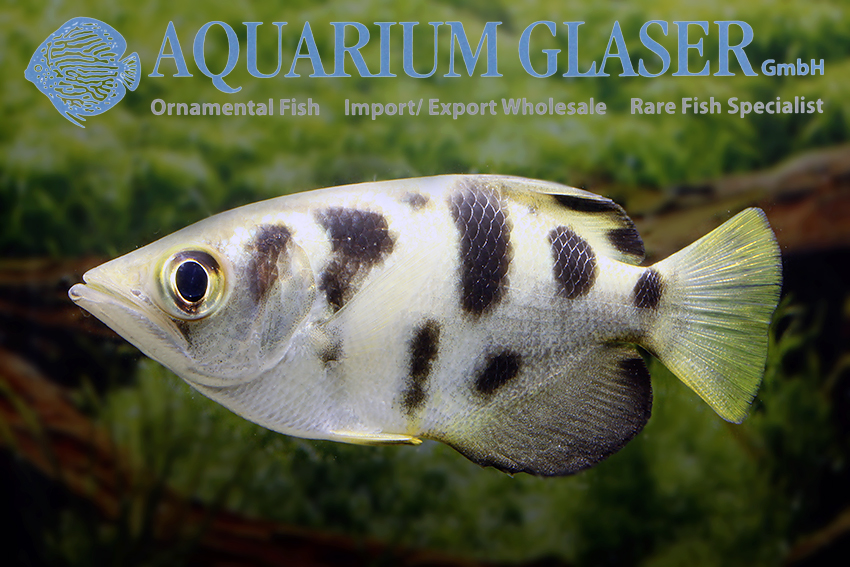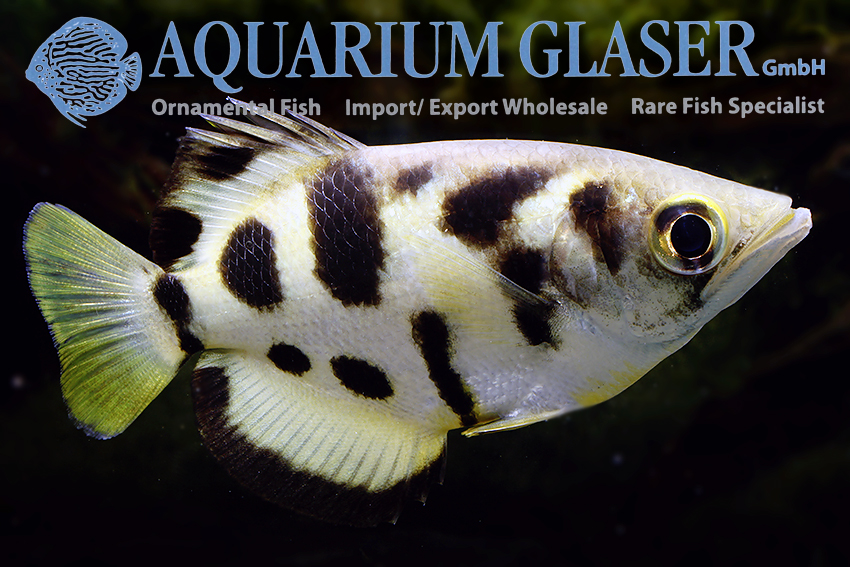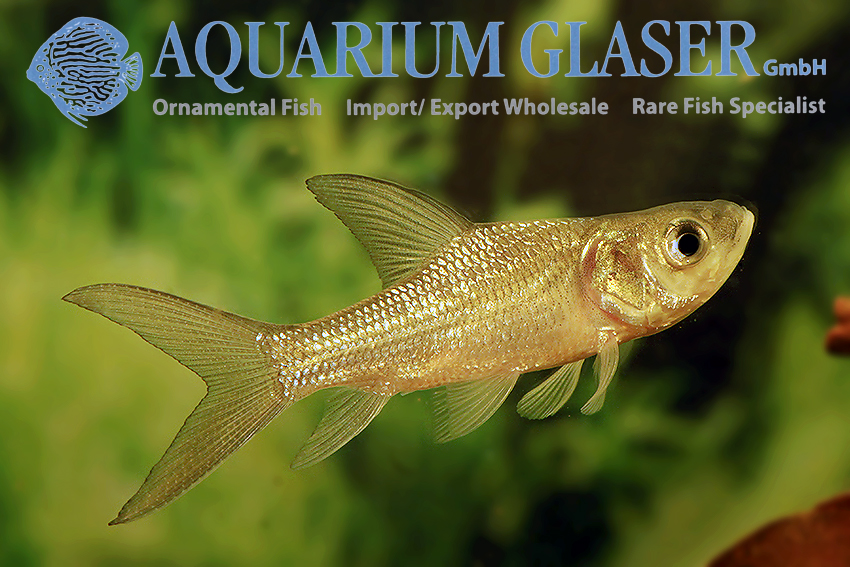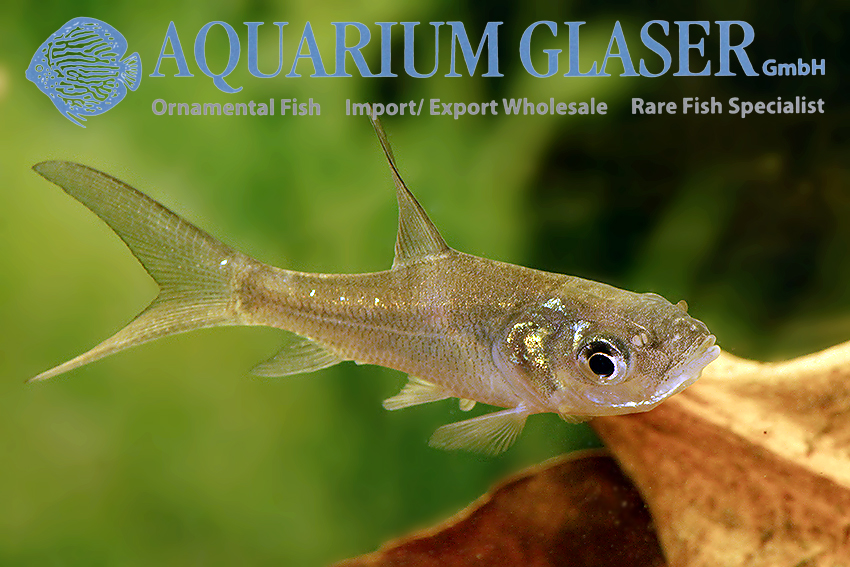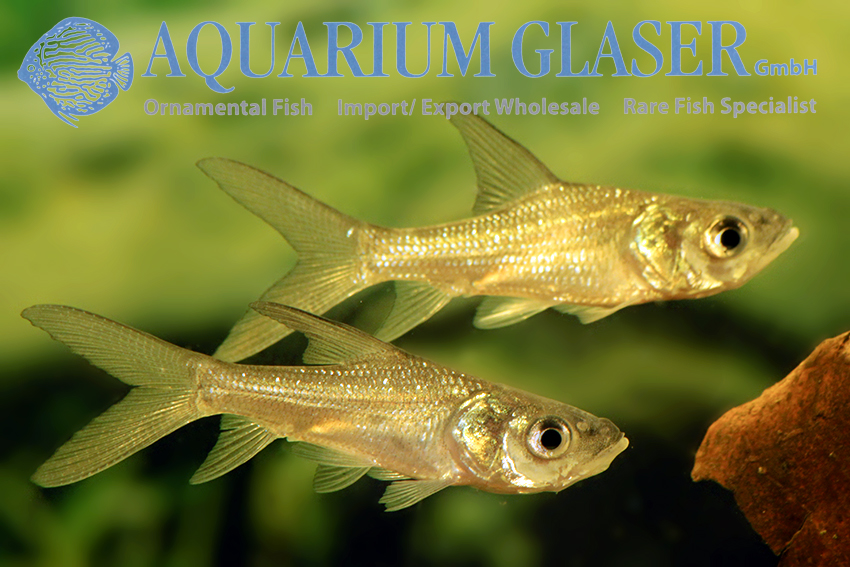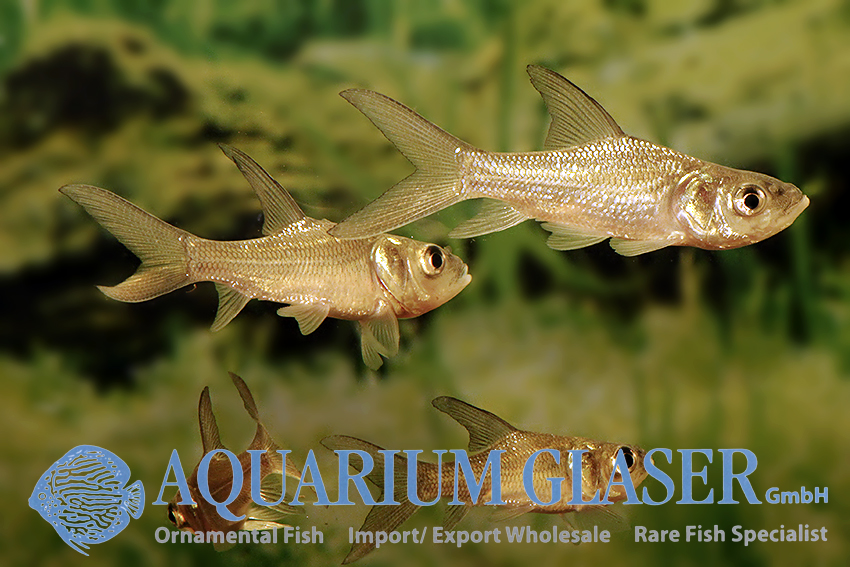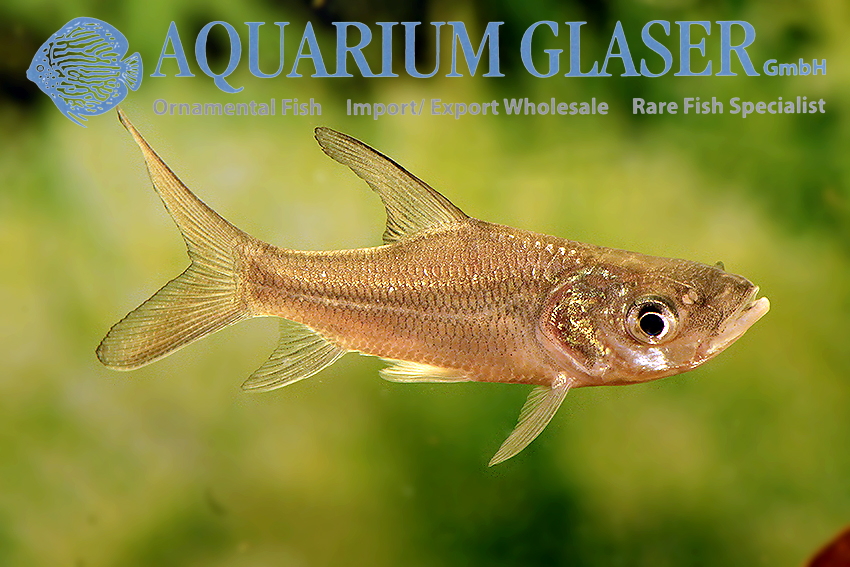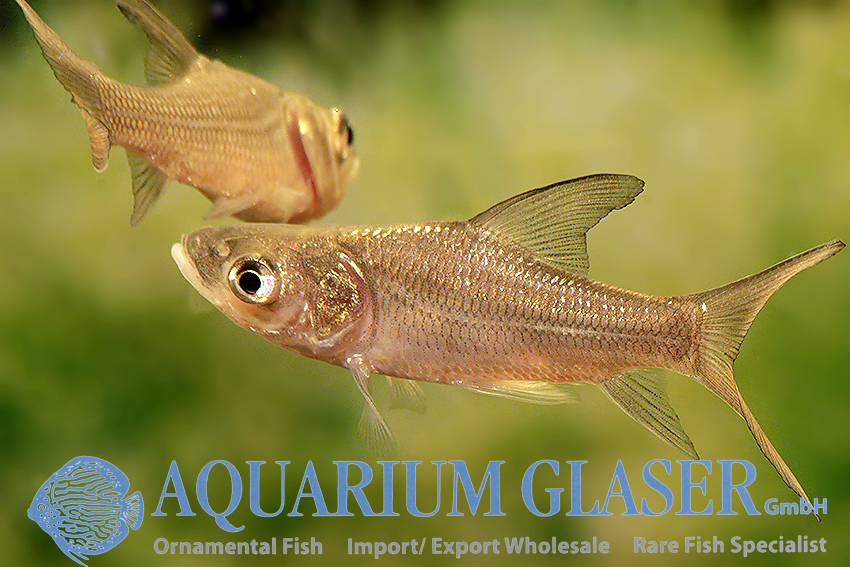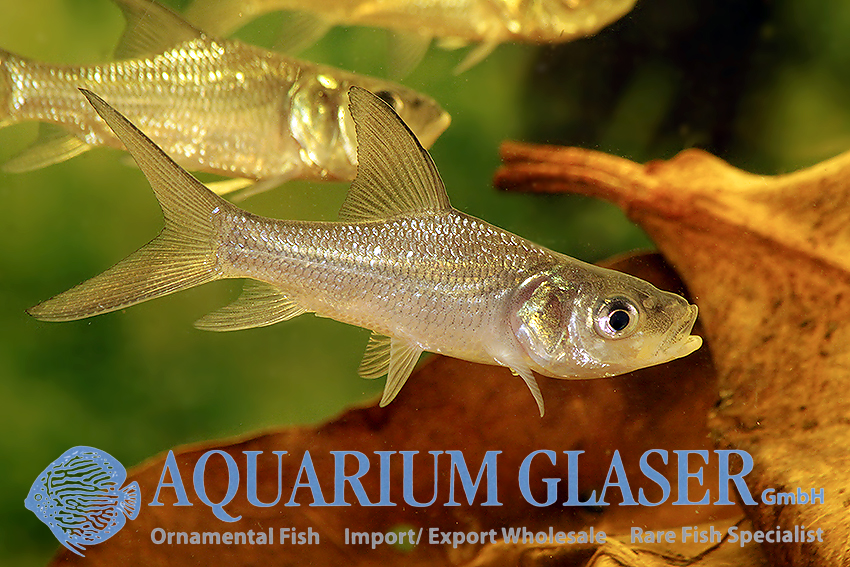At the moment we can once again offer very beautiful – i.e. strongly colored – offsprings of a dwarf spiny eel, which is not yet precisely identified. It is offered under the name Macrognathus aculeatus, but for various reasons it will probably not be this species. It shows the most similarity to Macrognathus siamensis, because like this species our redtail has strong pronounced, broad white bordered eye spots in the dorsal fin.
In any case they are very pretty, sociable animals, which under normal circumstances are not to be expected to grow much bigger than about 15 cm. All spiny eels are inquisitive and adaptive fish, which can give you a lot of pleasure. However, community fish should not be too small, otherwise they will be eaten. Water temperatures can be between 22 and 30°C, with the middle range being the most favorable. Every frozen and live food that fits into the mouth is eaten, also water fleas catch these fish skillfully from the water column, whereby they take a position like a seahorse. But also granulated food is accepted. Water hardness and pH-value do not play a role for the care, every drinking water is suitable.
There are two things to keep in mind when caring for spiny eels: absolutely escape-proof aquariums and sufficient hiding places in the form of caves. Since spiny eels also like to dig themselves in, the substrate should consist of sand at least in places.
For our customers: the animals have code 425208 on our stocklist. Please note that we only supply the wholesale trade.
Text & photos: Frank Schäfer





